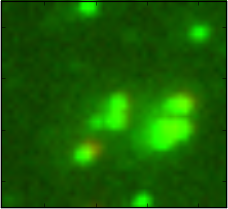

- Cellprofiler measureobjectneighbors manual#
- Cellprofiler measureobjectneighbors Patch#
- Cellprofiler measureobjectneighbors full#
- Cellprofiler measureobjectneighbors software#
In this way, we monitored primary porcine and human stem cell-derived RPE cells in stress model conditions by performing scratch assays. To fill this gap, we propose dynamic full-field OCT (D-FFOCT) as a candidate for live observation of in vitro RPE phenotype. But as crucial as understanding both healthy and pathological RPE cell physiology is for those diseases, no current technique allows subcellular in vivo or in vitro live observation of this critical cell layer. In case of age-related macular degeneration (AMD), the atrophy of retinal pigment epithelium (RPE) precedes neural dystrophy. Retinal degenerative diseases lead to the blindness of millions of people around the world. Color scale indicates the number of neighbors. Box indicates the region shown enlarged below. (J) Image showing cells identified and color-coded by CellProfiler based on how many neighbors they have. (I) Original image of Drosophila epithelial cells growing in a sheet. (H) The pipeline of modules used for the analysis shown in panels I and J.

(G) After 24 h, the wound has recovered due to cells migrating from the edges (top) and now is much smaller in measured size (bottom). (F) At time point zero, the wound visible in the original image (top) is large and the cells present at the edges of the image cover a small percentage of the area of the image, as quantified by CellProfiler (bottom). (E) The pipeline of modules used for the analysis shown in panels F and G.
Cellprofiler measureobjectneighbors manual#
The manual tumor count for each image (vertical axis) is plotted versus the CellProfiler count (horizontal axis), revealing strong concordance (R 2 value is shown). (D) Tumors in a set of 20 images were counted by CellProfiler and by two researchers. (C) Image with tumors outlined by CellProfiler. (A) The pipeline of modules used for the analysis shown in panels B–D. Identification and measurement of green fluorescent protein (GFP)-labeled tumors in mouse lungs, the wound healing assay, and Drosophila tissue topology. Scale bars for panel E–G: top, 20 mm bottom, 5 mm. (G) Image showing outlines of patches that were forced into a standard circular shape to measure the amount of growth in each patch, using intensity units.
Cellprofiler measureobjectneighbors Patch#
The measured area of each patch is shown numerically on top of each patch, in pixels. (F) Image showing the patches' natural outlines determined by CellProfiler, including wiggly protrusions (arrow). (E) Original image of yeast patches growing in a grid with 8 rows and 12 columns. (D) The pipeline of modules used for the analysis shown in panels E–G. (C) Enlarged portion of panel B, with the annotations placed by CellProfiler shown in yellow. The grid placed on the image by CellProfiler is shown as red lines. Each spot contains a double-stranded RNA (dsRNA) that knocks down a particular gene. (B) A living cell RNA interference microarray with 40 rows and 28 columns of spots, stained for DNA. (A) The pipeline of modules used for the analysis shown in panels B and C. Grids of samples can be annotated and analyzed.
Cellprofiler measureobjectneighbors software#
This free, easy-to-use software enables biologists to comprehensively and quantitatively address many questions that previously would have required custom programming, thereby facilitating discovery in a variety of biological fields of study. Small numbers of images can be processed automatically on a personal computer and hundreds of thousands can be analyzed using a computing cluster.
Cellprofiler measureobjectneighbors full#
The software automatically identifies objects in digital images, counts them, and records a full spectrum of measurements for each object, including location within the image, size, shape, color intensity, degree of correlation between colors, texture (smoothness), and number of neighbors. The applications demonstrated here include yeast colony counting and classifying, cell microarray annotation, yeast patch assays, mouse tumor quantification, wound healing assays, and tissue topology measurement.

Here we describe the use of the open-source software, CellProfiler, to automatically identify and measure a variety of biological objects in images. Careful visual examination of biological samples is quite powerful, but many visual analysis tasks done in the laboratory are repetitive, tedious, and subjective.


 0 kommentar(er)
0 kommentar(er)
